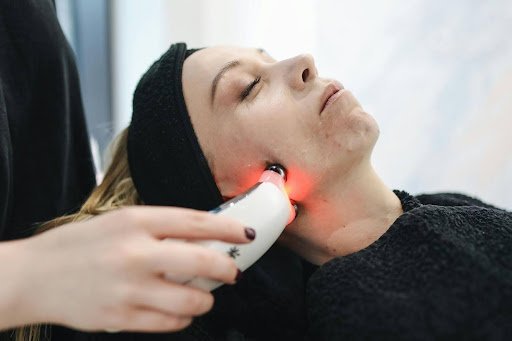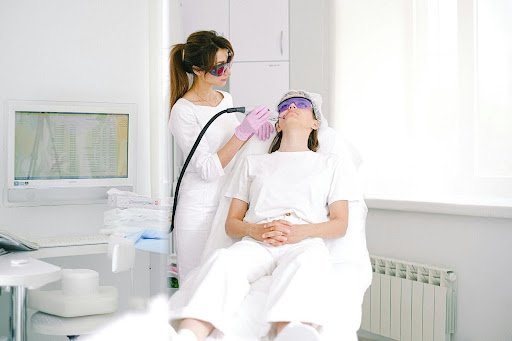
Laser Therapy: Pain Relief and Healing Solutions
Laser therapy has been considered as one of the latest inventions of modern medicine for management of pain and healing. This technique does not involve any making of incisions, it employs the use of light energy that triggers the cells to heal damaged tissues and lessen inflammation.
Therefore, laser therapy has quickly taken root with practitioners and clients because of its efficiency for the treatment of various ailments and rarely comes with any undesirable outcomes. In this essay, issues concerning this treatment are discussed, including the operation principles, uses in pain management and healing, and the gains patients get.
Understanding Laser Therapy
Laser therapy or LLLT, photobiomodulation is the therapeutic application of light that would otherwise not be strong enough to tissue-denature protein or cut through tissue with heat. While surgical lasers work through a mechanism of either cutting or cauterizing tissue, therapeutic lasers aim at emitting low power densities that would stimulate healthy responses within a living organism.
The received light energy contributes to the subsequent series of biochemical reactions that positively influence the cells’ functions and contribute not only to the wound healing but also the general improvement of the organism’s condition.
The working principle of this treatment falls under the category known as photobiomodulation. Thus, when the light energy is absorbed by the mitochondria, the energy factories of the cells, there is an acceleration of ATP production, which is the primary energy source of various cellular processes. You can click the link: https://www.healthline.com/health/laser-therapy to learn more.
An increase in ATP production thus improves the cellular processes, promotes faster tissue regeneration and decreases inflammation. Besides, laser treatment helps in stimulation of endorphin production; the body’s natural pain control mechanism resulting in effective relief from pain.

Applications in Pain Relief
Laser therapy is most commonly used in the area of analgesia that refers to the management of pain. Arthritis, tendinitis and neuropathies are chronic pain conditions that can dramatically lower the patient’s quality of life. Conventional methods of managing pain are sometimes accompanied by the use of drugs that produce other illnesses or surgeries with a variety of complications. This treatment is thus safer and effective in alleviation of pain since it has no side effects of traditional methods.
It is effective in the management of pain on the basis of decrease in inflammation, enhancement of blood circulation and hormone catalyst of happiness-endorphins. For instance, in osteoarthritis, laser therapy can work for the patient and helps in relieving pain and stiffness that comes along with the disease through the action of working on the inflamed tissues and stimulating cartilage healing. Likewise, people with tendinitis or bursitis will also benefit from the laser light as it eliminates inflammation and promotes the regeneration of the affected tendons and bursae.
Not only that, but laser therapy has also applied effectively in the management of neuropathic pain as it helps to alter the activity of nerves and decrease the sensitivity of nerves. These are the fundamental ways through which the body and its parts as well as the brain achieves healing and tissue repair.
Besides analgesia, laser therapy is one of the most effective weapons in the management of healing and tissue regeneration. Consequently, the healing time of different injuries like the wound, sprain or strain could be significantly reduced by the application of laser therapy. Higher levels of ATP and optimal working of the cell also means that different tissues can be repaired faster and hence faster recovery times.
Laser therapy into wound healing has shown great success. It promotes the rate of division of fibroblasts, cells for producing collagen, the substance needed to occasion the closing of the wound and remodeling of tissues. You can learn more by clicking the link.
Also, laser therapy promotes the formation of fresh blood vessels, which aids in the supply of blood to the affected area faster and also the associated faster rate of healing. Because of this, it becomes exceptionally useful for the treatment of chronic ulcers like diabetic ulcers and pressure sores that can hardly respond to conventional treatments.
Moreover, postoperative rehabilitation of animals can be done through the use of laser therapy to enable fast healing and relieve postoperative discomfort. Therefore, when the procedure is done on a patient, the usage of laser therapy aids the body in healing and decreases inflammation hence fastening recovery and enhancing the mobility of the affected body part. This is advantageous most in orthopedic operations since bones, ligaments, and muscles need to heal in order to facilitate good results.
Benefits and Considerations
Laser therapy has several benefits that could be considered as its strong sides, so a patient should consider trying it in case of pain or necessity in speedy recovery. Secondly, it is safe, not causing any cuts, injections, or drug interventions in the process on treating the patients. This minimizes the chances of getting complications and also gets rid of the time that one may have to spend in recovering from the intervention and this means that the individual can be able to go back to his or her normal activities right after the procedure.
Also, laser therapy is safe with few complications and hence may not cause much discomfort to the patient. Patients may get warm during the procedure perhaps due to the lasers but most of them get it well and are not uncomfortable.
Laser therapy has been also found to be very effective and also very flexible in terms of the areas that it can be applied. We can use it to address both acute situations and chronic pain situations including chronic pain syndrome. Further, laser therapy can be made supplementary to other treatment methods like the physiotherapy and chiropractic treatment to improve the results achieved.
General health conditions, for example, cancer or active infections, are likely to prevent a patient from receiving Laser therapy. Hence, the patient should be clinically assessed by a qualified professional in the health sector before the treatment is prescribed.
Moreover, it is necessary to note that this treatment is more effective only in case of certain circumstances, for example if the condition of a patient is critical.
